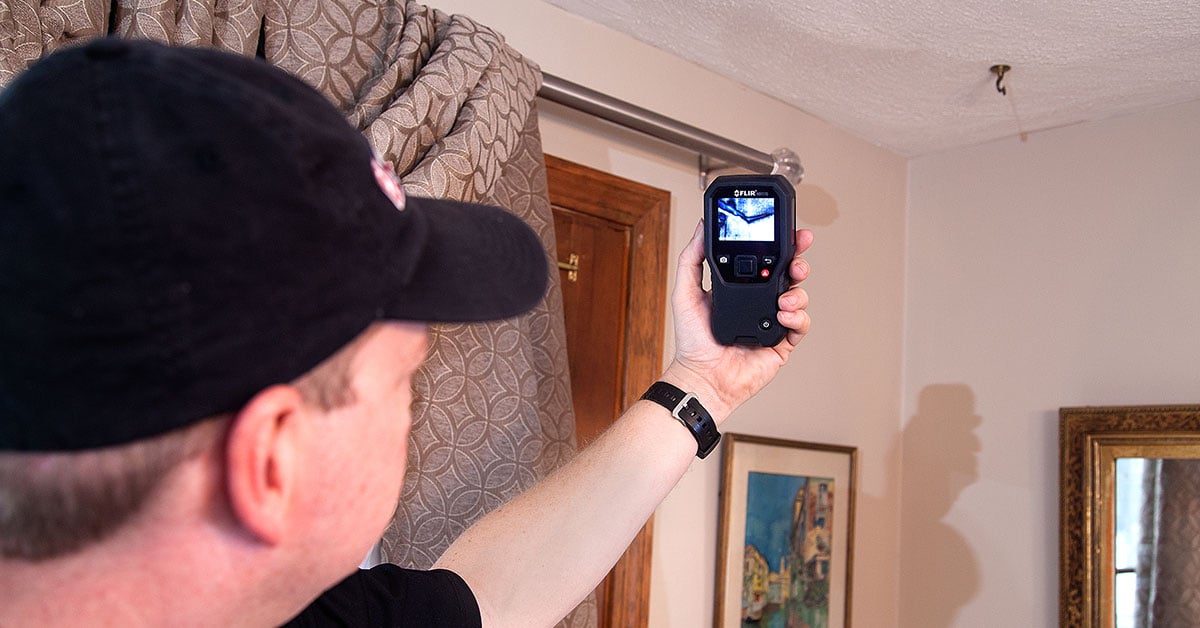How to Check If Your Home Has a Covert Leakage
How to Check If Your Home Has a Covert Leakage
Blog Article
What are your insights and beliefs on Locating water leaks?

Early detection of leaking water lines can alleviate a prospective calamity. Besides saving you money, it will certainly reduce the worry and also irritation. The minute you find a leak, calling your plumber for repair work is the best remedy. Nevertheless, some little water leaks may not be visible. If you can not detect it with your naked eyes, below are some hacks that help.
1. Take A Look At the Water Meter
Every home has a water meter. Checking it is a proven manner in which aids you discover leakages. For starters, switch off all the water resources. Ensure nobody will purge, make use of the tap, shower, run the cleaning device or dishwasher. From there, most likely to the meter as well as watch if it will transform. Because nobody is using it, there ought to be no motions. If it moves, that suggests a fast-moving leak. If you discover no modifications, wait a hr or 2 as well as check back once more. This suggests you might have a sluggish leak that could also be below ground.
2. Check Water Intake
Analyze your water expenses as well as track your water consumption. As the one paying it, you must discover if there are any discrepancies. If you detect sudden changes, regardless of your usage being the same, it suggests that you have leakages in your plumbing system. Keep in mind, your water bill need to drop under the same array monthly. A sudden spike in your costs suggests a fast-moving leakage.
At the same time, a constant boost each month, despite the exact same practices, reveals you have a slow leak that's also gradually escalating. Call a plumber to completely inspect your property, especially if you feel a warm location on your floor with piping below.
3. Do a Food Coloring Test
When it pertains to water intake, 30% comes from toilets. Test to see if they are running correctly. Decline specks of food color in the container and wait 10 minutes. If the color somehow infiltrates your dish during that time without flushing, there's a leakage in between the container and dish.
4. Asses Outside Lines
Don't fail to remember to check your outdoor water lines too. Should water leak out of the connection, you have a loose rubber gasket. One small leak can squander bunches of water and spike your water expense.
5. Check and Evaluate the Scenario
Homeowners need to make it a practice to inspect under the sink counters as well as even inside cupboards for any type of bad odor or mold and mildew development. These 2 warnings suggest a leakage so timely attention is needed. Doing regular examinations, also bi-annually, can save you from a significant trouble.
Check for stainings and weakening as many pipes and home appliances have a life expectations. If you presume leaking water lines in your plumbing system, don't wait for it to escalate.
Early detection of dripping water lines can alleviate a potential disaster. Some tiny water leaks may not be visible. Examining it is a surefire method that assists you discover leaks. One small leak can throw away tons of water and spike your water costs.
If you believe leaking water lines in your plumbing system, do not wait for it to rise.
WARNING SIGNS OF WATER LEAKAGE BEHIND THE WALL
PERSISTENT MUSTY ODORS
As water slowly drips from a leaky pipe inside the wall, flooring and sheetrock stay damp and develop an odor similar to wet cardboard. It generates a musty smell that can help you find hidden leaks.
MOLD IN UNUSUAL AREAS
Mold usually grows in wet areas like kitchens, baths and laundry rooms. If you spot the stuff on walls or baseboards in other rooms of the house, it’s a good indicator of undetected water leaks.
STAINS THAT GROW
When mold thrives around a leaky pipe, it sometimes takes hold on the inside surface of the affected wall. A growing stain on otherwise clean sheetrock is often your sign of a hidden plumbing problem.
PEELING OR BUBBLING WALLPAPER / PAINT
This clue is easy to miss in rooms that don’t get much use. When you see wallpaper separating along seams or paint bubbling or flaking off the wall, blame sheetrock that stays wet because of an undetected leak.
BUCKLED CEILINGS AND STAINED FLOORS
If ceilings or floors in bathrooms, kitchens or laundry areas develop structural problems, don’t rule out constant damp inside the walls. Wet sheetrock can affect adjacent framing, flooring and ceilings.
https://www.servicemasterbyzaba.com/blog/how-to-detect-water-leakage-in-walls/

Do you really like reading about Detecting hidden plumbing leaks? Post feedback down below. We would be pleased to know your feelings about this write-up. In hopes to see you back again soon. Loved our blog? Please share it. Help someone else discover it. Thanks for your time. Come back soon.
Report this page